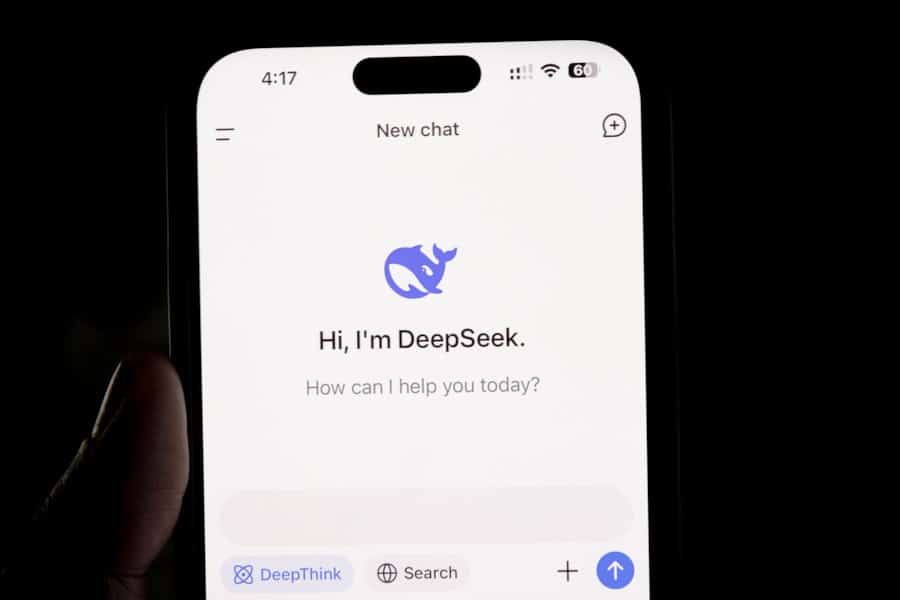End-to-end encryption (E2EE) is a method of data transmission that ensures only the communicating users can read the messages. In this system, the data is encrypted on the sender’s device and only decrypted on the recipient’s device, preventing any intermediaries, including service providers, from accessing the plaintext content. This technology has gained significant traction in recent years, particularly with the rise of messaging applications like WhatsApp, Signal, and Telegram, which have integrated E2EE to enhance user privacy.
The fundamental principle behind E2EE is to provide a secure communication channel that protects sensitive information from unauthorized access, whether from hackers, government surveillance, or even the service providers themselves. The importance of E2EE cannot be overstated in an era where data breaches and privacy violations are rampant. As individuals and organizations increasingly rely on digital communication for personal and professional interactions, the need for robust security measures has become paramount.
E2EE serves as a bulwark against various threats, ensuring that even if data is intercepted during transmission, it remains unreadable without the appropriate decryption keys. This technology not only safeguards personal conversations but also plays a crucial role in protecting sensitive business communications, medical records, and other confidential information.
Key Takeaways
- End-to-end encryption ensures that only the sender and recipient can read the messages, providing a high level of privacy and security.
- Current challenges and controversies surrounding end-to-end encryption include law enforcement concerns about access to encrypted data for criminal investigations.
- End-to-end encryption has the potential to greatly impact privacy and security by protecting sensitive information from unauthorized access.
- Technological advancements and innovations in encryption methods continue to improve the strength and reliability of end-to-end encryption.
- Regulatory and legal considerations play a crucial role in shaping the future of end-to-end encryption, with governments and policymakers debating the balance between privacy and security.
Current Challenges and Controversies
Despite its advantages, end-to-end encryption is not without its challenges and controversies. One of the most significant issues revolves around law enforcement’s ability to access encrypted communications during criminal investigations. Authorities argue that E2EE can hinder their ability to prevent and solve crimes, as it effectively creates a “warrant-proof” space where illicit activities can occur without detection.
This has led to heated debates about the balance between individual privacy rights and public safety. For instance, in high-profile cases involving terrorism or child exploitation, law enforcement agencies have called for “backdoors” in encryption systems that would allow them to bypass security measures when necessary. Moreover, the implementation of backdoors raises ethical concerns about the potential for abuse.
If companies were to create vulnerabilities in their encryption systems for government access, these same weaknesses could be exploited by malicious actors. This dilemma has led to a growing divide between tech companies advocating for user privacy and governments emphasizing the need for security. The ongoing discussions highlight the complexity of establishing a universally accepted framework that addresses both privacy and security concerns without compromising either.
Potential Impact on Privacy and Security

The implications of end-to-end encryption on privacy and security are profound. On one hand, E2EE empowers users by providing them with greater control over their personal information. It fosters an environment where individuals can communicate freely without fear of surveillance or data breaches.
This is particularly important in regions where authoritarian regimes monitor and censor online communications. By utilizing E2EE, activists, journalists, and ordinary citizens can share information securely, thereby promoting transparency and accountability. Conversely, the same features that protect user privacy can also be exploited by malicious actors.
Cybercriminals can use encrypted platforms to coordinate illegal activities, share sensitive data stolen from victims, or disseminate harmful content without fear of being traced. This duality presents a significant challenge for policymakers who must navigate the fine line between protecting civil liberties and ensuring public safety. The potential for misuse underscores the need for ongoing dialogue among stakeholders to develop solutions that enhance security while preserving the fundamental right to privacy.
Technological Advancements and Innovations
The landscape of end-to-end encryption is continually evolving as technological advancements emerge. Innovations such as quantum cryptography promise to revolutionize the field by providing unprecedented levels of security through principles of quantum mechanics. Unlike traditional encryption methods that rely on mathematical algorithms, quantum cryptography uses the behavior of photons to create secure communication channels that are theoretically immune to eavesdropping.
This could significantly enhance the robustness of E2EE systems, making it nearly impossible for unauthorized parties to intercept or decipher messages. Additionally, advancements in artificial intelligence (AI) are being leveraged to improve encryption protocols. AI algorithms can analyze vast amounts of data to identify potential vulnerabilities in encryption systems and suggest enhancements in real-time.
Machine learning techniques can also be employed to detect unusual patterns of behavior that may indicate a security breach, allowing for proactive measures to be taken before any damage occurs. As these technologies continue to develop, they hold the potential to create more secure and efficient end-to-end encryption solutions that can adapt to emerging threats.
Regulatory and Legal Considerations
The regulatory landscape surrounding end-to-end encryption is complex and varies significantly across different jurisdictions. In some countries, governments have enacted strict regulations that require tech companies to provide access to encrypted communications under certain circumstances. For example, Australia passed the Telecommunications and Other Legislation Amendment (Assistance and Access) Act in 2018, which mandates that companies assist law enforcement agencies in accessing encrypted data when requested.
Such laws have sparked debates about the implications for user privacy and the potential risks associated with creating backdoors.
The European Union’s General Data Protection Regulation (GDPR) emphasizes data protection and privacy for all individuals within the EU and European Economic Area.
This regulatory framework encourages organizations to adopt strong encryption practices as part of their compliance efforts. The divergence in regulatory approaches highlights the need for international cooperation and dialogue to establish common standards that balance privacy rights with security needs.
The Role of Big Tech Companies

Big tech companies play a pivotal role in shaping the future of end-to-end encryption. Their decisions regarding encryption protocols can have far-reaching implications for user privacy and security on a global scale. Companies like Facebook (now Meta), Google, and Apple have invested heavily in developing robust encryption technologies for their messaging platforms.
For instance, Apple’s iMessage employs end-to-end encryption by default, ensuring that only the sender and recipient can access their conversations. However, these companies also face immense pressure from governments seeking access to encrypted communications for law enforcement purposes. The tension between maintaining user trust through strong privacy protections and complying with governmental requests for data presents a significant challenge for these corporations.
As they navigate this complex landscape, their policies regarding end-to-end encryption will likely influence public perception and adoption of secure communication technologies.
Consumer Awareness and Adoption
Consumer awareness of end-to-end encryption is crucial for its widespread adoption. Many users remain unaware of how E2EE works or its significance in protecting their privacy online. Educational initiatives aimed at informing users about the benefits of using encrypted messaging services can help foster a culture of security-conscious communication.
For example, campaigns highlighting the risks associated with unencrypted messaging platforms can encourage individuals to switch to more secure alternatives. Moreover, as data breaches become more prevalent in the digital age, consumers are increasingly prioritizing privacy when choosing communication tools. Surveys indicate that users are willing to adopt platforms that offer strong encryption features if they understand their importance in safeguarding personal information.
This growing awareness presents an opportunity for tech companies to market their products based on security features while also emphasizing their commitment to user privacy.
Predictions for the Future
Looking ahead, the future of end-to-end encryption is likely to be shaped by ongoing technological advancements, regulatory developments, and shifting consumer attitudes toward privacy. As quantum computing becomes more mainstream, traditional encryption methods may need to evolve to remain secure against potential threats posed by quantum attacks. This could lead to a new era of cryptographic techniques that leverage quantum principles to enhance data protection.
Users will likely expect clear explanations of how their data is protected and what measures are in place to prevent unauthorized access. This trend could drive innovation in user-friendly encryption solutions that prioritize both security and usability.
In conclusion, while end-to-end encryption presents challenges and controversies, its role in enhancing privacy and security remains critical in today’s digital landscape. As technology evolves and societal attitudes shift, E2EE will continue to be a focal point in discussions about data protection and individual rights in an increasingly interconnected world.
In a recent article discussing The Future of End-to-End Encryption in Digital Communications, it is important to consider the implications of data privacy and security in our increasingly digital world. As technology continues to advance, it is crucial for companies to prioritize protecting user information. This is especially relevant in light of recent updates such as Instagram adding a dedicated spot for pronouns, allowing users to express their identity more freely online. To further enhance user experience and security, companies like Samsung are constantly innovating with products like the Samsung Galaxy S21. For more information on the latest tech trends and innovations, check out this article.
FAQs
What is end-to-end encryption?
End-to-end encryption is a method of secure communication that prevents third-parties from accessing data while it’s transferred from one end system or device to another. The data is encrypted on the sender’s system or device and only the recipient is able to decrypt it.
How does end-to-end encryption work in digital communications?
In digital communications, end-to-end encryption works by encrypting the data on the sender’s device and only decrypting it on the recipient’s device. This means that the data is secure and private throughout the entire transmission process.
What are the benefits of end-to-end encryption in digital communications?
The benefits of end-to-end encryption in digital communications include enhanced privacy and security, as well as protection against unauthorized access to sensitive data. It also helps to prevent eavesdropping and data breaches.
What are the potential challenges or drawbacks of end-to-end encryption in digital communications?
One potential challenge of end-to-end encryption in digital communications is that it can make it difficult for law enforcement and security agencies to access communications for legitimate reasons such as criminal investigations. Additionally, end-to-end encryption can also make it harder for companies to monitor and moderate content on their platforms.
What is the future of end-to-end encryption in digital communications?
The future of end-to-end encryption in digital communications is likely to involve continued efforts to improve and strengthen encryption methods, as well as ongoing debates and discussions about the balance between privacy and security. It is also expected that there will be increased adoption of end-to-end encryption in various communication platforms and technologies.


Add a Comment